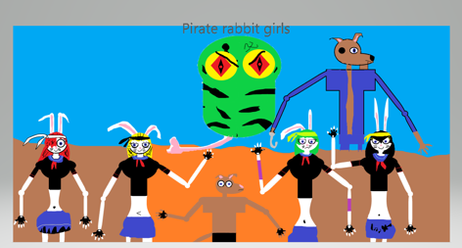HOME | DD
 Tomozaurus — Kulindadromeus sketch
by-nc-nd
Tomozaurus — Kulindadromeus sketch
by-nc-nd

Published: 2014-07-26 11:14:35 +0000 UTC; Views: 3525; Favourites: 96; Downloads: 17
Redirect to original
Description
A quick sketchy one (>2 hours total), but I couldn't resist trying my hand at this little miracle.Kulindadromeus zabaikalicus
Sketch. Pencil 2014.
Reference: Godefroit et al., 2014, A Jurassic ornithischian dinosaur from Siberia with both feathers and scales, Science.
Related content
Comments: 9

I really like this one. 
Well, I do have a bit of critique, though. Sadly, I can't remember the exact distribution, but I know that somewhere on the hind limbs its feathers came out of a basal plate, and those were shaped like scales. Considering that, do you think it would have made the legs less fluffy looking? If I remember right, the strands coming out of the basal plate were rather thin and not joined together. I'm also wondering about the distribution on the lower arm. (I hope I got the terminology right, there.)
👍: 0 ⏩: 1

If you look at my illustration you can see the arms and the legs show the feathers radiating from a central point rather than acting as single filaments as the rest of the body. These are the feather type you mention.
No I do not think the legs would be less fluffy looking. I currently see no reason to think that the radial structures are anything but normal radial symmetrical feathers and the "basal plate" the calamus, flattened by fossilization. The paper also seems to come to this conclusion, saying "These groups of filaments are similar to feather morphotype 3 (21, 22) and resemble the down feathers of some modern chicken breeds, such as the Silkie, which are devoid of barbules". Nowhere in the paper does it say they look like scales.
On the distribution, unfortunately all the paper says is that scales are on the manus and feathers are on the humerus, so that is what I've illustrated. They do not go into further detail.
Anyway, thank you for the compliments and interest.
👍: 0 ⏩: 1

Yes, that is true, but the paper also says this:
"The basal plates are also larger on the humerus (3 to 4 mm wide) than on the femur (2 to 3 mm); they are arranged in a hexagonal pattern, but they remain distinctly separated from each other, contrasting with the contiguous distribution
of the scales on the distal forelimb, hindlimb, and tail in Kulindadromeus and also with the feathered scales that cover the tarsometatarsus of some living birds (17). Whether the basal plates represent modified scales or calamus-like structures remains unclear and requires further investigation"
So, it seems as though the authors are still considering the possibility that the basal plates could represent modified scales. I agree now that it seems much more likely that they're simply a calamus flattened during preservation, though, but given that on the legs of some birds, a feather can arise out of a scale. See these photographs:
dracontes.deviantart.com/art/C…
I'm aware that the scutes and scutella on the legs of all birds are repressed feathers, though. So, given this, is it possible such a structure would be possible in Kulindadromeus? It seems like it to me, and I wonder if the authors will investigate this further in future studies.
But I suppose, parsimoniously speaking, the simplest explanation is that they're flattened calamus. But given the wide variety of integument in even modern birds, it does make me wonder.
I'm not trying to argue, in fact, I enjoy discussing this subject. So I hope you won't take offense to what I've written here.
Edit: Nevermind, I see that the authors mention that they're distinct from feathered scales, but I'm still wondering if they're similar in some way. I also think that their mention of them being in a hexagonal pattern is why I kept thinking they were feathers arising from scales and not merely a flattened calamus.
👍: 0 ⏩: 1

No, not offended at all. The possibility is of course there, but as you said yourself it is more parsimonious at the moment to think of them as flattened calamus, so that is what I've done. In the photos provided I honestly can't really see any hexagonal shape, they just look oblong and randomly distributed to me. Either way they don't really look or act anything like the feathered scutella on the limbs of some birds in my opinion.
👍: 0 ⏩: 1

I agree, they don't look very hexagonal. And it's odd that it's only on the humerus and not any other areas of the body. If they did have feathered scales it wouldn't make any sense for them only to be on the humerus. I'm going to agree with you now that it's just an artifact of preservation.
👍: 0 ⏩: 0

So the Siberian neoornithischian that has been ghosting around for months now finally has a name.
👍: 0 ⏩: 0

Looks sad. 
Jokes aside, nice job.
👍: 0 ⏩: 0





























